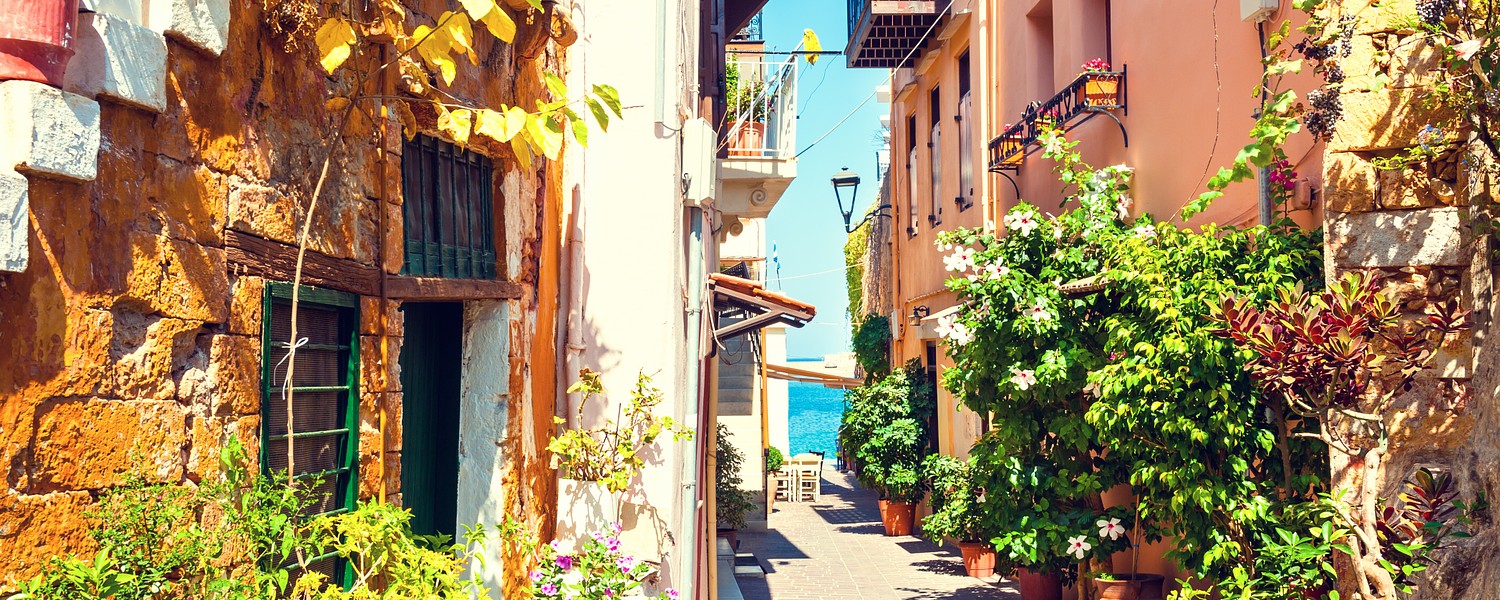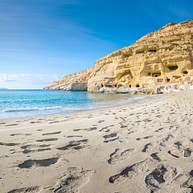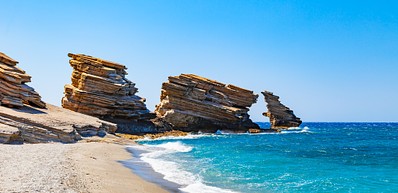
Balos Lagoon
On the northwest coast of Cape Gramvousa, in a bay formed between the lesser capes of Tigani and Vouha, lies the sea-lagoon of Balos. A quiet beach, opposite the two Gramvousa islands (Wild and Tame), it features warm, turquoise waters and white sand. The sand is actually partly composed of minutely crushed sea-shells, which impart a pinkish hue to it. The water immediately off shore is shallow, but deepens elsewhere.
Read more



















